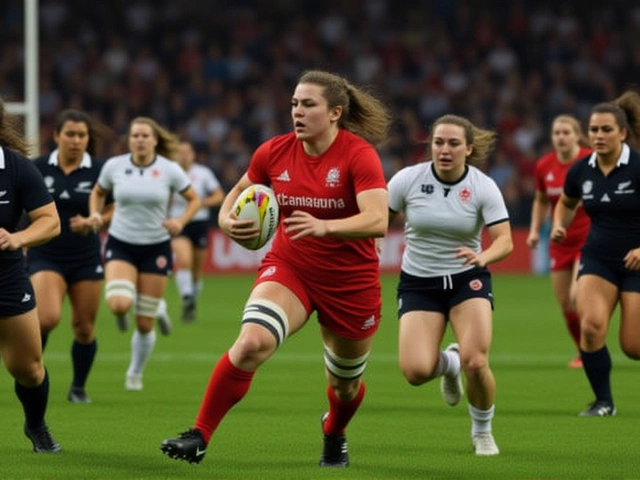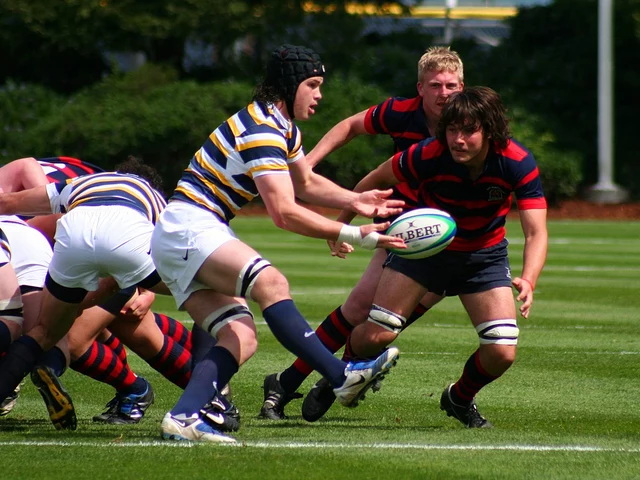How Height Shapes Your Rugby Game
Ever wondered why some players dominate line‑outs while others blitz through gaps? The answer often starts with how tall you are. Height gives you a natural edge in certain roles, but it also brings challenges you can work around. Let’s break down what height means for a rugby player and how you can use it to your advantage.
Which Positions Love Tall Players?
Locks and second‑row forwards are the classic tall spots. Their height makes catching high throws and lifting teammates easier, which is vital in line‑outs. In the backs, a tall winger can snag loose balls and out‑jump defenders on kick‑returns. Even a taller scrum‑half can see the field better when distributing the ball. So, if you’re five foot eight or taller, think about where those extra inches help most.
Strengths That Come With Height
First, you get a longer reach. That means more room to wrap around a tackler or to pull the ball away from an opponent. Second, you tend to have a higher centre of gravity, which can be useful for jumping and contesting aerial balls. Finally, taller players often have larger hand‑size, making handling passes in tight spaces a bit easier.
But height isn’t a free pass. A higher centre of gravity can make you a bigger target for tackles, and you might lose some low‑ground agility. That’s why many tall players focus on core strength and flexibility to stay balanced in contact.
Training Tips for Tall Rugby Players
Work on explosive leg power. Squats, box jumps, and sled pushes help you launch off the ground for line‑out lifts or sudden bursts. Add mobility drills for hips and ankles – think lunges with a twist and ankle circles – to keep your low‑body game sharp. Upper‑body work like pull‑ups and bench presses builds the grip you need for holding on in rucks.
Don’t neglect cardio. Tall players sometimes carry more weight, so high‑intensity interval training (HIIT) can keep your stamina up without adding bulk. Mix short sprints with longer jogs to mimic the stop‑and‑go nature of a match.
Choosing the Right Gear
Fit matters. Boots that are too tight will limit foot movement, while ones that are too loose can cause slipping in scrums. Look for jerseys with a longer cut if you’re over six feet; a proper fit helps you stay comfortable and reduces the chance of snags during tackles.
Protective gear, like a well‑fitted mouthguard and padded headgear, is especially important for taller players who face more high‑impact collisions. It keeps you in the game longer and cuts down on injuries.
Game‑Day Mindset
Use your height to read the game. From a higher viewpoint you can spot gaps earlier and anticipate where the ball will go. Communicate that vision to teammates – call out line‑out strategies or tell the scrum‑half when you see a weak side to exploit.
Remember, rugby is a team sport. Whether you’re a towering lock or a modest‑sized flanker, your contribution counts. Focus on your strengths, train the weak spots, and you’ll find that height becomes a tool, not a limitation.
Ready to put your stature to work on the pitch? Start with the exercises above, keep your gear snug, and keep an eye on the whole field. Your height can give you the edge you need to make big plays and help your team win.
The average height of an American rugby player is 6'2". This is slightly taller than the average American male, which is 5'9". The average weight of an American rugby player is 208 lbs. However, the height and weight of a player will vary depending on their position. For example, forwards tend to be taller and heavier than backs. On average, a forward is 6'5" and 230 lbs, while a back is slightly shorter and lighter. In general, the taller and heavier a player is, the more effective they will be at the game.
READ MORE





